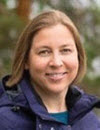
Dear Colleagues,
SAIs’ and auditors’ expertise in environmental auditing is at the heart of a common sustainable future. As the global community acts against and past the pandemic situation, the focus on sustainable solutions will be tested.
I am pleased to announce that INTOSAI WGEA has started to implement its Work Plan 2020–2022. The work plan contributes to increasing audit expertise and capabilities. We aim to bring the best out of opportunities that arise in turbulent times.
The visions of the seven Work Packages were supported by the Steering Committee in its meeting 24-26 March. The work includes projects related to plastic waste, climate finance, and sustainable transport, which …
By SAI Finland
The pandemic forced us all to change our plans, but we lept into digital meetings and reduced our environmental impact. The first Steering Committee meeting of the INTOSAI WGEA Work Plan period 2020–2022 took place on 24–26 March. We at the Secretariat w…
Do you have comments on this issue of Greenlines? Click here to send us an e-mail.
Read about your fellow auditors' work on environmental issues

Dear Colleagues,
SAIs’ and auditors’ expertise in environmental auditing is at the heart of a common sustainable future. As the global community acts against and past the pandemic situation, the focus on sustainable solutions will be tested.
I am pleased to announce that INTOSAI WGEA has started to implement its Work Plan 2020–2022. The work plan contributes to increasing audit expertise and capabilities. We aim to bring the best out of opportunities that arise in turbulent times.
The visions of the seven Work Packages were supported by the Steering Committee in its meeting 24-26 March. The work includes projects related to plastic waste, climate finance, and sustainable transport, which all have a strong connection to the Sustainable Development Goals (SDGs). The Working Group will continue capacity-building activities, review past products, plan for future products, and enhance the communication and visibility of our common work.
The Steering Committee demonstrated an admirably strong commitment by participating in a virtual meeting regardless of the time zones. I’m very pleased that we were able to stay operative even under these exceptional times. ‘Necessity is the mother of invention’, as we tend to say in Finland. I thank all participants for their active input and support.
I wish all our members good health and hope to see the delegations at the 20th Assembly Meeting. We are preparing for a virtual setting, allowing for fruitful an exchange of insights on topical issues in environmental auditing, such as the circular economy.
Tytti Yli-Viikari
Auditor General, SAI Finland
By SAI Finland
The pandemic forced us all to change our plans, but we lept into digital meetings and reduced our environmental impact. The first Steering Committee meeting of the INTOSAI WGEA Work Plan period 2020–2022 took place on 24–26 March. We at the Secretariat were excited to cooperate with SAI Morocco, which had kindly agreed to host the meeting in magical Marrakech. The preparations were running at full speed when the alarming news on the COVID-19 pandemic forced us to change the plans quickly. We lost the possibility of team-building and face-to-face discussions, but we stayed operational. As a side effect, we took a ‘digital leap’ and reduced our environmental impact.
As the INTOSAI WGEA is an environmental working group, we have to be sensitive to the environmental impacts of our own work. The substantial work we do strengthens the effectiveness of environmental governance and hopefully helps to shift towards more sustainable societies taking better into account the planetary boundaries. In addition, our work has direct environmental impacts – mainly through travelling to our meetings.
Based on the discussions on our own environmental responsibility in the Secretariat, we were prepared to suggest to the Steering Committee that we would experiment with organizing the second meeting of the 2020–2022 Work Plan period as a video conference. But the world events took us by surprise, and we had to organize the video conference already a year and a half earlier than planned!
Once the virus outbreak worsened globally, it became clear that we would not be able to meet in Marrakech. This was not the first time in the history of the INTOSAI WGEA that a meeting had to be moved due to unexpected circumstances. Meanwhile, the progress in technology has made virtual meetings possible. Therefore, we had two options: either to postpone the meeting or to organize it digitally. From the Work Plan perspective, it was important that the meeting would be organized in the first place in order to kick-off the projects. Moreover, postponing would have meant uncertainty about a suitable time in the future – and very crowded calendars, as so many events have been moved to a later date.
Creating a digital meeting was a completely new challenge for the Secretariat, not to mention that we had to do it in two weeks. But as an old proverb says, “necessity is the mother of invention”. So we cancelled all the plans we had made with SAI Morocco, found a new virtual venue for the meeting, considered whether we wanted to keep it as a four-day-meeting or whether we should squeeze it into one day, and pondered how we could run panel discussions and conversations in a digital environment, where participants cannot spontaneously provide their comments.
A moment of panic came when we realized in the Secretariat that we would not be able to attend the meeting from our office. As the pandemic grew more severe, our office premises became off limits, and we were constrained to run the meeting from the comfort of our homes.
One of the greatest sources of gray hair during the preparations was the schedule. As our Steering Committee members come from 16 different countries and nine different time zones, it inevitably meant that there was a high probability that some of the participants would be half asleep in their pyjamas. Then again, in global meetings someone is always jet-lagged. Fortunately, as the schedule was left somewhat loose, we were able to plan the sessions based on whose participation was necessary. We tried to ensure that the project leaders did not have to present their visions on plastic waste, climate finance, and sustainable transport in the middle of the night.
In the end, the agenda turned out to be fairly balanced. None of the days were too exhausting, and we were able to have breaks in-between meetings, so the participants had time to take a nap, have breakfast or, if they wished, even afternoon yoga, depending on the time zone.
There are plenty of different webinar and virtual meeting solutions available. Based on our experience it is extremely useful to have the virtual hand-raising function, which makes the moderation much easier. It is also useful to have the option to mute participants’ microphones to avoid echoing as well as the feature to receive voice recordings for writing down minutes of the meeting.
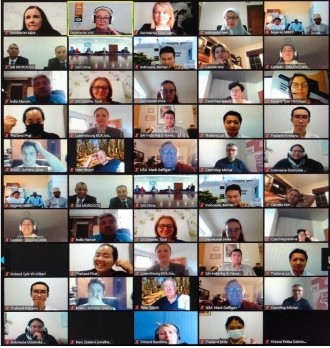 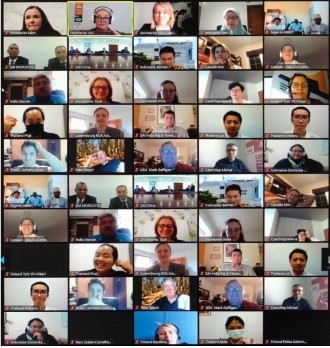 |
| The official group photo of the first digital steering committee meeting March 24-26, 2020. |
Based on responses to the feedback survey, many participants used the chosen application (Zoom) for the first time. It seems that video conferences will become more popular in the future, and providers come up with improved options to meet the growing demand.
Given that a virtual meeting is quite different from a physical meeting, the feedback on our video conference was surprisingly positive. Participants were happy that the meeting took place despite the circumstances and found the meeting productive and engaging. We are aware that the circumstances affected the views, as a physical meeting was simply not an option.
Many SAIs were also pleased that the number of colleagues participating in the meeting was higher than would have been possible if participation had required long-distance travelling. An opportunity to engage more people and share the burden is a clear advantage with a virtual meeting.
One reason for the relatively smooth running of the meeting was that we organized test sessions before the actual meeting. This ensured that everyone had their technical settings in order before the actual meeting. Moreover, only very few participants reported having had severe technical problems, and one participant even found the moderating format of the virtual meeting more engaging!
The Covid-19 outbreak has had a significant impact on the emissions in the environment. Especially the air quality has improved in cities around the world due to reduced traffic and cuts in industrial production. We have probably all seen the maps showing how much less air pollution there was in cities during the lockdown compared with the situation before the virus. However, any longer-term sustainability implications depend on what happens once societies open up again and whether the stimulus packages support sustainable transition to a low-carbon and resource-wise future.
Accordingly, if we, as the INTOSAI WGEA, organize one meeting over video, it has only a one-off impact on our environmental performance. Therefore, we in the Secretariat are committed to considering replacing at least some of the face-to-face Steering Committee meetings systematically with a video conference or arranging shorter meetings if they take a virtual format. We could also increase the web streaming of the Assembly meetings in order to better reach those participants in SAIs who are not able to travel.
This does not mean that we will stop seeing each other face-to-face. According to the feedback survey, despite the positive feedback on the videoconference, most Steering Committee members preferred to have the next meeting as a physical event. We in the Secretariat also believe there is genuine value in being able to meet in person and to continue the discussions informally after the meeting sessions end. What is important is that when we travel, we truly seek to add value.
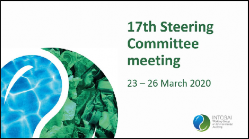

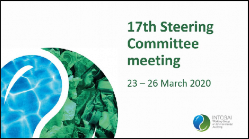
The 17th Steering Committee meeting was held as a series of webinars 23–24 March 2020. The greatest highlight of the meeting was series of webinars 23–24 March 2020. The greatest highlight of the meeting was that project leaders presented the visions for all seven work packages of the Work Plan 2020–2022 (can be downloaded from here: https://wgea.org/activities/) and the Steering Committee members supported them all.
Several training sessions on environmental auditing have taken place. Training on auditing SDGs was held 24–28 February 2020 in the International Centre for Environment Audit and Sustainable Development in Jaipur, India. MOOC by SAI Estonia and University of Tartu on the topic of auditing environmental impacts of infrastructure was held 16 March – 12 April 2020 (materials available here: https://www.ut.ee/en/mooc/auditing-environmental-impacts-infrastructure).
The Secretariat collected contributions to the 2020 WGEA audit collection in June. Based on the audit collection, the environmental audits’ database will be updated with the newest information soon on the WGEA website (database available here: https://wgea.org/audit/).
The 20th Assembly Meeting will be held in Rovaniemi, Finland in January 2021. If COVID-19 restricts travelling, the meeting will be web-streamed. Detailed information related to the meeting will be provided by the Secretariat via email.
The EWGEA Secretariat joined forces with the European Court of Auditors (ECA) to organize a unique Joint Biodiversity Conference in Luxembourg on 22-24 October 2019.
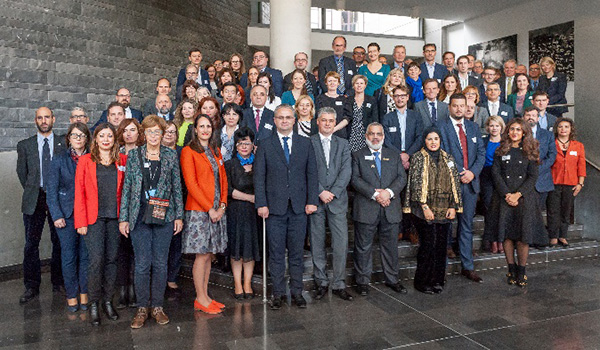
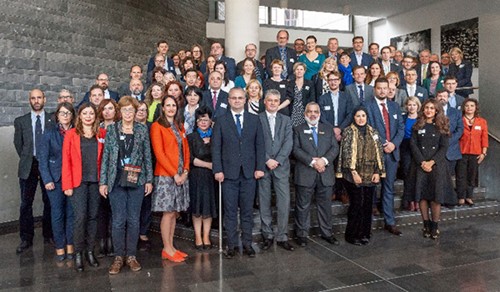
Supported by the impressive list of experts commissioned by ECA at a separate conference day, over 60 participants from 30 SAIs and ECA were actively engaged at the 17th Annual Meeting of EUROSAI WGEA which shortly followed.
It was clear from the interventions of the experts that biodiversity decline and biotic homogenisation are increasing in Europe. While numerous factors affect biodiversity, agriculture and the EU Common Agricultural Policy were frequently mentioned at the meeting as emerging pressures on biodiversity. Presentations about relevant audit experiences were heard and discussions revolved around detecting risks in different biodiversity- related fields and the potential for organising a cooperative audits on biodiversity and on the role of finance in the planning phase of biodiversity audits.
Materials of the meeting are available here.
The 2020 spring event of EWGEA originally planned on Malta was cancelled at the last minute due to the Covid-19 pandemic and substituted with a video-meeting instead. Luckily, most initially registered participants and even some additional ones were able to attend virtually – altogether around 70 participants from 24 SAIs. Keynote speeches were offered by the University of Malta, the European Investment Bank and Elering AS. Different angles of sustainability were addressed, from the promotion of renewable energy technologies to energy security and energy transmission systems – SAIs have plenty of angles to take in the field. Participants also had a chance to share information about their energy-related audit work and muse about potential cooperative projects between offices on the subject.
Materials of the seminar are available here.
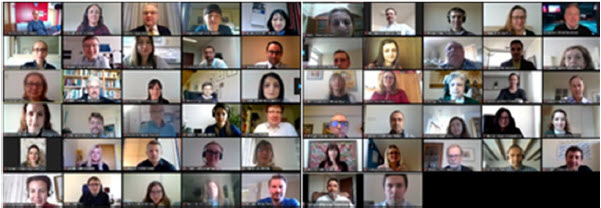
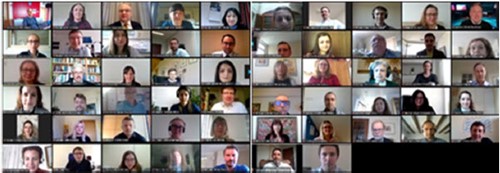
SAI Estonia has passed the chairmanship of EWGEA to SAI Poland, completing its 6-year coordination of the group. Due to the postponement of the XI EUROSAI Congress traditionally approving such changes, the Governing Board of EUROSAI confirmed the transfer in June 2020 instead. SAI Estonia’s outgoing EWGEA Secretariat wishes to thank all INTOSAI WGEA colleagues and the Secretariats of the global mother-group— both SAI Indonesia, the previous, as well as SAI Finland, the current – for a fruitful and enjoyable collaboration. It deserves a mention that SAI Poland was the first Chair of EWGEA during 1999-2008, so EWGEA family will surely be in good hands in the years ahead!
By the National Audit Office of Estonia
 Bulgaria : Management of Protected Areas is not Effective
Bulgaria : Management of Protected Areas is not Effective
The Bulgarian National Audit Office (BNAO) evaluated the effectiveness of Bulgaria’s management of protected areas within the European Ecological Network, known as Natura 2000. Bulgaria’s network consists of 234 areas for the conservation of natural habitats, wild fauna, and flora, and 120 areas for the conservation of wild birds, with 13 areas dedicated to priorities under both directives. The audit, which covered the period from January 1, 2016 to December 31, 2018, looked at: the management of the network; monitoring, control, and reporting on the status of the network, and progress on implementing Bulgaria’s National Priority Framework for Natura 2000.
Audit findings included:
BNAO concluded that Bulgaria’s Natura 2000 Network management is not effective due to: incomplete, inconsistent incorporation of European directives into Bulgarian legislation; insufficient network management and incomplete designation of Natura 2000 areas; lack of an effective monitoring, controlling, and reporting system; and insufficient transparency and accountability of public expenditures and achieved results implementing the EU directives.
For more information, please contact Katya Nedialkova at k.nedyalkova@bulnao.government.bg.
 Czech Republic : Difficult to Assess Benefits of Drought Mitigation and Flood Protection Measures
Czech Republic : Difficult to Assess Benefits of Drought Mitigation and Flood Protection Measures
In the last six months, the Supreme Audit Office of the Czech Republic (SAO) published audit reports focused on two environmental issues - droughts and floods. The first audit, entitled “Measures implemented in agriculture and the environment to mitigate the effects of drought and water scarcity,” focused on measures taken by the Ministry of Agriculture and Ministry of the Environment to mitigate the negative effects of drought and water scarcity from 2013 through 2018. Auditors examined the way ministries handled the fight against drought and how it was funded.
The audit revealed that major measures to combat droughts are missing. The existing subsidy programmes have not been adapted to address the issue of drought and new measures have not been put into practice. New measures with a specific aim to resolve the issue of drought and water scarcity—such as the construction of dams in regions affected by drought due to water scarcity, linking water systems to safeguard water resources, and other measures—exist in written form only as a part of the government policy. In most cases, the programmes are not tailored to combat drought and water scarcity and do not define specific and measurable objectives, so the benefits of these programmes and the achievement of targets cannot be assessed.
In addition, the damage caused by drought continues to rise. According to estimates from the Ministry of Agriculture, droughts caused an estimated 3 billion CZK in damage in 2015. This increased to an estimated 7.7 and 24 billion CZK in damages in 2017 and 2018, respectively.
The second audit, entitled "Support of flood protection measures," focused on whether funds allocated to flood control measures were spent effectively, efficiently, and in compliance with legal regulations. Due to the geographical location of the Czech Republic, flood protection is carried out in an international context. The territory of the Czech Republic belongs in three international river basin districts.
Ten major floods hit the Czech Republic from 1997 to 2013 and resulted in at least 123 human victims and property damage amounting to 186.4 billion CZK. SAO audited flood control measures from 2016-2018, such as subsidy programmes and related tasks carried out by the Czech ministries of environment and agriculture, state river basin enterprises, and the Operational Programme Environment.
Audit reports are available at https://www.nku.cz/scripts/rka-en/detail.asp?cisloakce=19/04&rok=0&sestava=0 or https://www.nku.cz/scripts/rka-en/detail.asp?cisloakce=18/27&rok=0&sestava=0.
For more information, please contact Benjamín Groll or Sylva Müllerová at sylva.mullerova@nku.cz or benjamin.groll@nku.cz.
 Ecuador : Incentives for Conservation of Private and Community Forests
Ecuador : Incentives for Conservation of Private and Community Forests
Ecuador’s Ministry of Environment has the “Socio Bosque” program that aims to reduce deforestation and carbon emissions. This program aligns with the National Development Plan of Ecuador, which has as a goal, among others, to reduce deforestation by 50 percent by 2021. To achieve this goal, the Ecuadorian government established "Socio Bosque" in 2008 to maintain the biodiversity of forests, reduce carbon emissions, and reduce poverty in rural areas. Although this program started before the completion of the United Nations 2030 Agenda, it can be considered a relevant contribution to achieving SDGs, such as 13.2, 14.5, 15.4, and 15.5.
On 23 December 2019, the Office of the Comptroller General of the State published a special audit report on the "Socio Bosque" program and its main objective of conserving 1,500,000 hectares of forest, by providing an economic incentive to landowners—individuals, communities, or indigenous peoples—to reduce deforestation and mitigate climate change. The audit objectives were to (1) verify compliance with technical and legal provisions in the landowner approval process; determine whether the economic incentives met technical, financial, and legal criteria; and (3) assess the degree of compliance with control and monitoring activities agreed to by the landowners and the Ministry of Environment.
The audit methodology included a review of documentation, assessment of cartographic information to verify boundaries, and on-site inspections to verify the integrity of selected forests. The audit identified difficulties with monitoring compliance of the legal, economic, and vegetative cover requirements; misuse of incentives; and landownership conflicts.
Based on these findings, the Ecuadorian control entity made recommendations to:
The SAI of Ecuador determined that if the program implements the proposed recommendations, it will strengthen and improve the management of forests and achieve its goals of conservation. Additionally, the program will be more effective, making it possible to implement and comply with national public policy related to pollution reduction, conservation, and mitigation and adaptation of climate change effects.
The full report is available at: https://www.contraloria.gob.ec/WFDescarga.aspx?id=60802&tipo=inf. For further information, please contact César Mateus, INTOSAI Liaison, at cmateus@contraloria.gob.ec.
 Egypt : Achieving the SDGs on Combating Desertification and Drought
Egypt : Achieving the SDGs on Combating Desertification and Drought
SAI Egypt hosted the 9th Annual Meeting of AFROSAI/WGEA from October 21-24, 2019. The meeting focused on challenges of combating desertification and food insecurities, including an assessment of how African SAIs are implementing the SDGs. SAI Egypt is focused on environmental auditing of activities combating desertification and drought throughout the Nile River Delta. From the perspective of the SAI, the issue of overcoming the disappearance of vegetation from governorates that depend on rainfall and groundwater can be achieved through the establishment of natural reserves and the provision of processed fodder addressing the phenomenon of overgrazing instead of vegetation consumption.
The SAI plans to achieve the SDGs regarding desertification through establishing indicators measuring environmental performance up to 2030. In addition, SAI Egypt is reviewing the environmental policies, programs and activities related to combating desertification and food insecurities caused by drought, including evaluating the effectiveness of these policies and compliance with relevant laws and regulations. For example, SAI Egypt is evaluating the performance of some reclaimed and cultivated land development projects that seek to increase the agricultural production and export potential of the country. In addition, the projects hope to contribute to reducing unemployment and population density, developing deserts by linking them to the Nile Valley and Delta, and creating touristic and urban communities.
Reception to the observations mentioned in the SAI reports has been positive. Specifically, there have been positive responses to considering legal procedures, coordination of completing the required works, and forming committees against violations, as well as limiting errors resulting from the siting and surveying processes. In addition, there has been a positive response to following up the reconfiguration of the reclaimed land with a review by the General Authority for Survey and to include the observations that are not yet covered by the Protocol.
For more information, please contact ircdept@yahoo.com or ircdept@asa.gov.eg.
 Estonia : Land Improvement Programs
Estonia : Land Improvement Programs
The Estonian climate is humid, and the amount of precipitation exceeds annual evaporation. In addition, bogs are very common in the Estonian natural landscape. Therefore, a significant part of the land used for agriculture and forestry suffers from excessive moisture. More than half of agricultural land and about one third of forest land is covered with land improvement systems, which allow landowners to continue using the land. Most of these systems were built between the 1960s and 1980s, and their service lives are expected to end soon. The state financially supports their reconstruction and maintenance. At the same time, land improvement systems are significantly changing the natural ecosystem and facilitating the flow of fertilizer and pesticide residues into water bodies, causing negative impacts to the environment. This should be avoided or alleviated as much as possible.
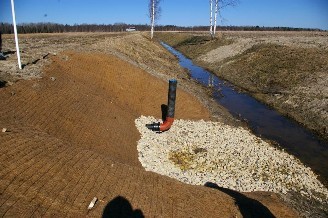
The National Audit Office (NAO) of Estonia analysed: (1) how the Ministry of Rural Affairs and Agricultural Board have supported, planned, and arranged the reconstruction and maintenance of land improvement systems; (2) how the Agricultural Board maintains the headwaters of state-managed land improvement systems; and (3) whether negative impacts to protected areas, species, and natural water bodies are avoided or minimized when landowners cooperate with the Environmental Board.
NAO found that land improvement subsidies play an important role in maintaining the value of agricultural land; however, the criteria for providing these subsidies do not prioritize lands that need less support to become productive—or deprioritize soil types which increase greenhouse gas emissions. So far, too little attention has been paid to the protection of water bodies and groundwater during the reconstruction and maintenance of land improvement systems, as information about the agricultural pollution conveyed through improvement systems is insufficient. Investments in environmental protection facilities, which should be part of land improvement systems and reduce pollution, have been modest. Therefore, state-supported land improvement systems are likely not fulfilling their environmental functions. The audit also revealed a case in which the protection of a nature conservation area was not assured because the environmental impact of reconstruction work was not properly evaluated.
For more information, please contact Airi Andresson (airi.andresson@riigikontroll.ee). The audit report with a summary in English is available on the NAO of Estonia’s website at www.riigikontroll.ee.
 Indonesia : Contributions of New and Renewable Energy to the National Energy Mix
Indonesia : Contributions of New and Renewable Energy to the National Energy Mix
In January 2020, the Audit Board of the Republic of Indonesia (BPK) completed a performance audit to assess the effectiveness of the New and Renewable Energy (NRE) Contribution Improvement Program in the national energy mix—particularly the government's efforts to create an investment climate that supports increased private sector participation in increasing the percentage of NRE in the national energy mix.
The scope of the audit included evaluating the planning, implementation, and monitoring and evaluation of the program from 2017 through 2019. Methodologies included document reviews, interviews, focus group discussions, physical observations of NRE power plants, questionnaires, and surveys.
The audit found that the government has enacted the General Planning for National Energy law, which includes targets for NRE mixes in 2025 and 2050 and strategies to achieve them. In addition, the government has created many fiscal and financial incentives, especially in the geothermal sector. Incentives include tax allowances, tax holidays, import duty facilities, government drilling, and geothermal infrastructure financing. The government also assigns a State-Owned Enterprise and Public Service Agency to manage government-sourced financing to support the development of NRE infrastructure.
However, there can be improvements made in policies and regulations, data on potential NRE and energy requirements, financial support for private investors, and research and development of NRE technologies. The audit also emphasized the importance of proactive and increased coordination between the Ministry of Energy and Mineral Resources and other ministries/agencies to achieve NRE targets.
Based on these findings, BPK recommended that the Minister of Energy and Mineral Resources make the following improvements, among others:
The full report is available upon request. Please send your request to international@bpk.go.id.
 Russian Federation : Environmental Goals Implementation
Russian Federation : Environmental Goals Implementation
Since 2018, one of the main priorities of the Accounts Chamber of the Russian Federation has been to improve the public audit system in order to achieve national goals, including monitoring and analyzing the Environment National Project (ENP). ENP involves 11 federal projects and is aimed at reducing air pollution; improving waste management and drinking water quality; and preserving water bodies, biodiversity, and forests. ENP contributes to achieving environmental and related SDGs, and ENP indicators have been included in the national set of SDG indicators.
The Accounts Chamber is developing an alternative model for monitoring the implementation of ENP, based on the use of risk assessment tools and a system of indicators that offers an alternative to ENP indicators. The model is intended to obtain an independent assessment of progress on ENP, the efficiency of public policies, and the adequacy of environmental measures.
In addition to ENP indicators, this alternative model includes measures: (1) on the condition of environmental components in designated territories and cities; (2) that are part of other national projects and government programs and projects of non-governmental organizations and enterprises; and (3) on public opinion on environmental issues. This set of measures allows the Accounts Chamber to assess ENP in terms of adequacy and funding to address environmental problems in regions where they are especially acute; assess the influence of other projects and programs, primarily in the commodity industry; and promptly focus on problems in regions with negative feedback from the public.
The most significant aspect of the new model is correctly identifying alternative indicators that characterize the factors that affect the environment and determine the country’s progress on implementing the ENP. The Accounts Chamber will then be able to assess current risks in terms of actual environmental changes by comparing deviations of the indicators from the planned values.
Currently, the alternative model has been tested on two federal projects that are in line with related SDGs—Clean Air and Integrated Solid Waste Management System. In particular, the monitoring results of the Clean Air project demonstrated the inadequacy of the NEP indicators. For example, in Krasnoyarsk, the most populated city with a very high level of air pollution, emissions are expected to decrease due to measures aimed at reducing emissions from large industrial enterprises. However, calculations by the Accounts Chamber showed that the successful implementation of measures under the Clean Air federal project will not dramatically change the situation because they do not account for small coal-fired heating plants and auto emissions.
Independent environmental audit methods are still being improved. The next step is to develop an alternative monitoring model for other areas of environmental protection, including biodiversity conservation efforts and measures intended to balance deforestation and forest restoration.
For more information, please contact the Department for International and Regional Cooperation of the Accounts Chamber of the Russian Federation intrel@ach.gov.ru; mazykina_ma@ach.gov.ru.
 Slovenia : Efficiency of Long-Term Drinking Water Resources Conservation
Slovenia : Efficiency of Long-Term Drinking Water Resources Conservation
In 2019, the SAI of Slovenia (Court of Audit) published a report and post-audit report on the conservation of long- term drinking water resources. The Court of Audit issued the opinion that the Ministry of the Environment and Spatial Planning was only partially efficient in the conservation of long-term drinking water resources.
The Court of Audit found that the Ministry mostly gathers appropriate data on the status of water bodies through state monitoring and has identified the main risks to the status of waters. However, the Court of Audit pointed out insufficient monitoring of deep aquifers as well as the fact that all substances which may be harmful to waters due to human activity cannot be detected by monitoring. It also warned that actual water stress might be greater than estimated because the Ministry does not have complete data. Additionally, the comparability of data on water stress with data from previous years was not fully ensured. The Court of Audit presented a case study on the impact of pollution on the quality of drinking water in the Dravska kotlina basin (exceeded limit values of pesticides and nitrates). It thereby stressed the importance of conserving bodies of groundwater because the rehabilitation of polluted drinking water sources may extend over several generations.
The Court of Audit examined data on the implementation of several measures for reducing water stress including: the designation of water protection areas, reducing the level of nitrates from agricultural sources, urban wastewater treatment, reducing the hydromorphological burden on waters, and on inspections of water stress. The Court of Audit established that the Ministry only partially monitored and reported on the implementation of these measures. In addition, based on the available data, there is a high probability that by the year 2021 the measures pertaining to the field of water management will not be carried out as planned.
In its post-audit report, the Court of Audit determined that the Ministry adequately implemented corrective actions. The Ministry has demonstrated the start of activities to ensure the status of the aquifer does not deteriorate and to investigate the causes of the presence of atrazine in groundwater, where it is still occurring.
A summary of the audit report and infographics is available in English at http://www.rs-rs.si/en/audits-auditing/audit-archive/audit/long-term-conservation-of-water-resources-2582-1/#tabs-3986 and the full report and post-audit report is available in Slovenian at http://www.rs-rs.si/revizije-in-revidiranje/arhiv-revizij/revizija/dolgorocno-ohranjanje-virov-pitne-vode-1749/#tabs-3986.
For more information, please contact the SAI of Slovenia at sloaud@rs-rs.si.
 South Africa : Basic Service Delivery Discrepancies at Local Level
South Africa : Basic Service Delivery Discrepancies at Local LevelContinual environmental audit involvement within the local government of South Africa--focusing on the management and basic service delivery of potable water, wastewater, and solid waste—revealed some recurrent audit findings and challenges.
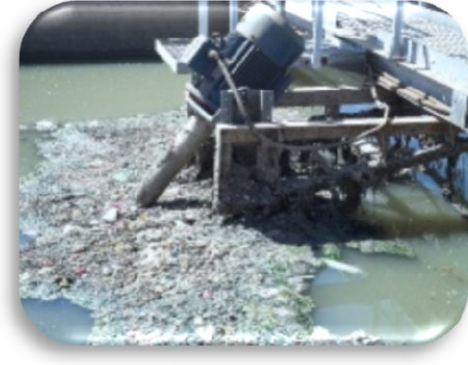
The lack of upgrading, maintenance, and repairs of water and wastewater infrastructure, coupled with severe resource constraints, often result in water losses and quality and availability concerns. Improper wastewater treatment and disposal processes negatively impact the environment, scarce water sources, and ultimately, the health and safety of all exposed to it. The growing trend of vandalism, theft, and demolishing of infrastructure are added concerns, further stressing already depleted budgets and the means to maintain and improve basic services. Solid waste management is also plagued by resource constraints and a dearth of legislation on disposal and treatment requirements.
Over a 3-year audit cycle, a total of 295 physical audit visits were performed in one of the provinces of South Africa at waste landfill sites, interim waste storage facilities, waste pits, wastewater treatment plants and pump stations, identified areas of dumping or pollution, and water purification works. The sites were assessed as critical, concerned, or fair, with a focus on the risks and impacts posed to the environment, the site’s resource base, and the health and safety of all exposed.


The findings were clear that continual regression of environmental management within the province—with dilapidated, vandalised, or stolen infrastructure that is improperly operated and maintained—causes pollution to the environment and water sources. Non-compliance and a lack of action on environmental transgressions have led to a failure to curb the alarming trend of pollution and depletion of scarce natural resources. Poorly managed waste landfill sites and wastewater treatment plants, with continual illegal dumping and improperly treated waste, are not only threatening the environment, but also having a severe impact on basic service delivery and the health of the communities. The aim of this public sector environmental audit was to proactively identify the most significant environmental risks that will ultimately impact finances, sustainability of service delivery and scarce resources, and the life of citizens. The value of environmental inclusion within the public sector audit methodologies of SAIs was also emphasized through the INTOSAI WGEA (2012) statement of “environmental auditing supports better governance and management”.
For further information, please contact Eric Smith at erics@agsa.co.za.
 Thailand : Engaging the Academic Community and Promoting SDG Auditing
Thailand : Engaging the Academic Community and Promoting SDG Auditing
According to the Moscow Declaration 2019, SAIs can increase their positive impact by establishing productive relationships with auditees and enhancing cooperation and communication with the academic community and public in general. Nowadays, the State Audit Office of the Kingdom of Thailand (SAO) plays this role and collaborates with the academic community through activities like cooperative research, workshops, and academic forums. Based on State Audit Policy 2018-2022, the State Audit Commission of Thailand promotes and supports preparedness of the SAO to evaluate and oversee the enhancement and achievement of government budget execution in response to auditing the Sustainable Development Goals (SDG) audit. Since 2019, SAO has engaged with academic institutions in order to adapt and develop the capacity of auditors to conduct environment and sustainable development audits. For example, SAO has gained SDG expertise collaborating with the Thailand Research Fund and the Faculty of Economics, Thammasat University via “SDG Move”—a program which serves as an SDGs think tank in Thailand.
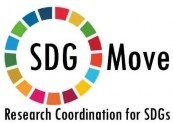
Working with SDG Move allowed SAO to promote SAO’s role as a key player in the SDG area. Additionally, teaming with SDG Move enhanced SAO’s SDG audit capacity by allowing SAO to initiate a number of activities, including (1) developing an SDG101 workshop to share essential knowledge with auditors; (2) implement an intensive e-blending course using the approach of the INTOSAI Development Initiative to provide auditors with information on performance auditing and produce SDG audit reports; (3) conduct research to create a tool to move from research to policy and practices, and (4) hold a seminar on the results of this research for the government and public.
Prepared by Dr. Sutthi Suntharanurak, Nunnapat Rueangsri, Phattraravee Parvaputsakul, and Chomprang Wongrusmeeduan, For more information, please contact int_rela@oag.go.th.
 Turkey : Flood Risk Management
Turkey : Flood Risk Management
SAI Turkey recently drafted a report on flood risk management that is currently undergoing a quality control process. The draft report uses a systematic, problem-solving approach to analyze flood risk management activities, identify potential challenges, and recommend corresponding solutions. The draft report has three main parts.
Part 1 includes general information on flood disasters, flood risk management at the basin scale, and Turkey’s flood risk management organizational structure. It also discusses the audit’s elements, methodology, question sets, and an overview of results.
Part 2 evaluates the effectiveness of the plans and organizational structure created to manage flood risks at the basin scale. SAI Turkey conducted this evaluation within the framework of the principles accepted by the EU Flood Directive.
Part 3 examines the implementation of legislative measures to reduce flood risks. Specifically, the draft report examines the effectiveness of control processes created to identify flood risks and prevent interventions that increase flood risk in streambeds. This evaluation's findings may inform the preparation of requisite planning and projects.
The audit findings can be summarized in three key points:
For further information, please contact Ms. Aysegul Boran, Principal Auditor, aysegulboran@sayistay.gov.tr.
 United States : Federal Assistance for Water Infrastructure Resilience
United States : Federal Assistance for Water Infrastructure Resilience
Extreme weather related to climate change potentially threatens utilities that produce drinking water and treat wastewater in the United States. In a February 2020 report, the U.S. Government Accountability Office (GAO) examined federal technical and financial assistance to make such infrastructure more resilient to extreme weather and asked experts about options. GAO reviewed relevant federal laws, regulations, and guidance from four key federal agencies that provide technical and financial assistance. GAO also interviewed federal officials from these agencies, representatives from 15 water utilities selected for diversity of size and geography, and 10 experts selected to represent different views. GAO found the following:
GAO recommended that EPA identify technical assistance providers and engage them in a network to help water utilities incorporate climate resilience into infrastructure projects. Also, GAO recommended that the U.S. Congress should consider requiring that climate resilience be considered in planning for federally funded water infrastructure projects.
The full report, Water Infrastructure: Technical Assistance and Climate Resilience Planning Could Help Utilities Prepare for Potential Climate Change Impacts (GAO-20-24), is available at https://www.gao.gov/products/gao-20-24.
For further information, please contact Alfredo Gomez at gomezj@gao.gov or Susan Iott at iotts@gao.gov.

The INTOSAI Working Group on Environmental Auditing (WGEA) aims to increase the expertise in environmental auditing and to enhance environmental governance with high-quality contribution and visibility by both members of the Working Group and non–member SAIs. Currently the INTOSAI WGEA consists of 86 member countries.
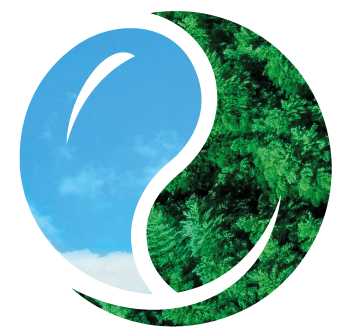
Vivi Niemenmaa - Secretary General
Email: vivi.niemenmaa@vtv.fi
Nella Virkola - International Affairs Planner
Email: nella.virkola@vtv.fi
Raisa Ojala - Deputy Secretary General
Email: raisa.ojala@vtv.fi
India Roland - International Affairs Planner (on leave)
Email: india.roland@vtv.fi
Kati Hirvonen - Project Specialist (on leave)
Email: kati.hirvonen@vtv.fi
Emilia Linnekoski - Intern
Email: emilia.linnekoski@vtv.fi
Sari Suonpää - Intern
Email: sari.suonpaa@vtv.fi
Mohamed Ibrahim Jaleel - Environmental Audit Manager
Email: mohamed.jaleel@audit.gov.mv
We collect and process your data on this site to better understand how it is used. We always ask you for consent to do that. You can change your privacy settings here.